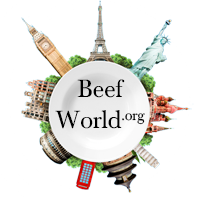The beef industry is one of the largest agricultural sectors in the United States, Canada, and Mexico. In 2017, those countries produced a combined total of nearly 25 billion pounds of beef. In addition to being a primary source of protein for many consumers, the beef market has grown significantly over the past several years due to increases in global demand. In fact, according to an article from Food and Agricultural Materials Society (FACTS), the global beef market experienced a 5% increase from 2013-2016 alone. In this article, we’ll explore some of the most important facts about the North American beef economy, including production volume and prices for both live cattle and carcass cuts. We’ll also review how each country’s individual supply chains influence their roles as domestic markets or exporters.
Live Cattle Economics
According to the USDA’s Foreign Agricultural Service, the United States is the world’s top producer of live cattle, accounting for 44% of global production. The majority of those animals are raised in the country’s Southern region, with Texas alone responsible for 15% of total volume. Other top live cattle-producing states include California, Nebraska, and Colorado. In terms of exports, the U.S. supplies a quarter of the world’s demand for live cattle. Major buyers of American-produced animals include Japan, Mexico, and China, with South America also purchasing a significant amount. On the other hand, the U.S. imports a small amount of live cattle from Australia and Canada.
Carcass Cut Economics
Although live cattle constitute a significant portion of the beef market, the value of carcass cuts is almost three times that of live animals. The U.S. produces a total of 27 billion pounds of carcass cuts every year, accounting for roughly 29% of the world’s total. Almost half of that volume is exported to other countries, with Japan, Canada, and Mexico being the top purchasers. Given their high value, carcass cuts are often traded on futures exchanges. For example, the Chicago Mercantile Exchange (CME) hosts the world’s largest live cattle futures market. In addition to live cattle, futures contracts for other types of meat are also available, including pork bellies and frozen pork loins.
Canada’s Beef Market
Canada is North America’s second-largest producer of beef, accounting for 18% of total global output. Alberta produces the majority of live cattle in the country, followed by Saskatchewan and Manitoba. Ontario, British Columbia, Quebec, and New Brunswick are also significant producers. Carcass cuts are valued at almost $7 billion annually, making the country’s beef market the fifth largest in the world. The vast majority of those cuts are exported to other countries, including Japan and Mexico. Canadian beef is extremely popular worldwide due to its high quality standards. The Canadian government requires that all cattle be raised without the use of antibiotics and growth hormones. In addition, all animals must be raised on open pastures, which is not the case in the U.S.
Mexico’s Beef Market
Mexico’s beef production accounts for approximately 9% of global supply, making it the third largest beef-producing country in North America. The vast majority of Mexican cattle are raised in the country’s Northern region, with Chihuahua alone accounting for 37% of total volume. Although Mexico does not export as much live cattle as the U.S., it is the second-largest exporter of carcass cuts in North America. In fact, the country is responsible for a full 40% of total North American exports, making it a major player in the global cattle economy.
United States’ Beef Market
Beef production in the United States accounts for 21% of global supply, making it the fourth-largest beef-producing country in the world. Texas alone produces 17% of the country’s live cattle and 21% of its carcass cuts. The U.S. is also the top importer of beef worldwide, as well as the largest consumer of all meat products. Despite this, the country maintains a trade surplus of $2.1 billion due to high meat demand and low supply.
The Bottom Line
Overall, the North American beef market is one of the largest agricultural sectors in the world. It produces billions of pounds of live cattle and carcass cuts annually, and the U.S. is the dominant player in both respects. While the U.S. and Canada are top live cattle exporters, Mexico is the dominant carcass cut exporter. This makes sense given that each product is valued differently, and Mexican cattle ranchers are able to produce high-quality cuts at a lower cost.





